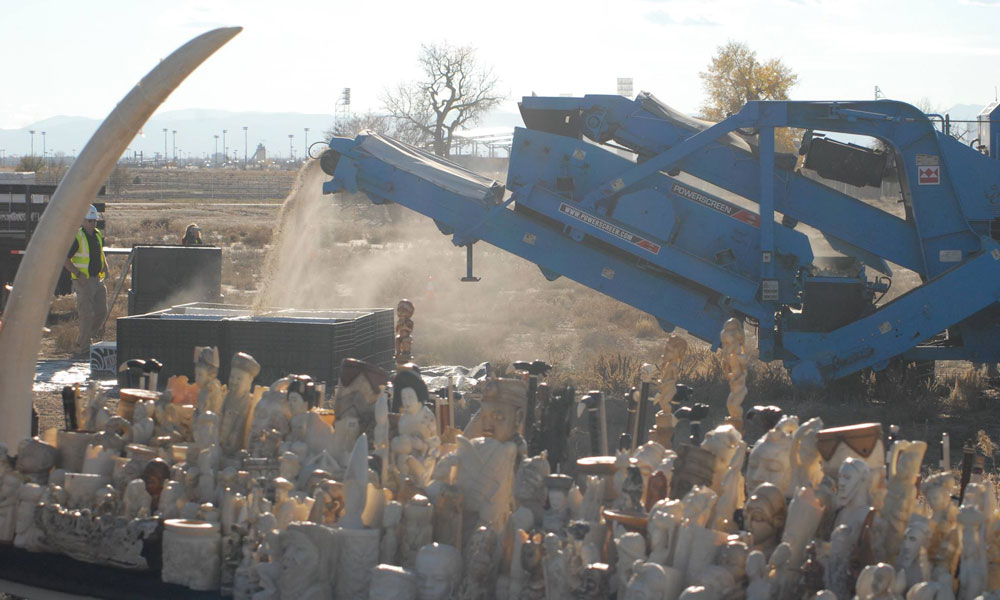
Why the Government Crushed Six Tons of Ivory, and What an Association Will Do With It
The U.S. Fish and Wildlife Service last week destroyed all of the ivory it had confiscated over the years. The Association of Zoos and Aquariums plans to use the crushed remains to teach the public about the dangers elephants face worldwide.
Sending a message to elephant poachers that the United States won’t tolerate the slaughter of the animals to enrich the illegal ivory trade, U.S. Fish and Wildlife Service officials demolished the ill-gotten materials stockpiled in its custody in a huge public display last Thursday.
Now, the agency has six tons of crushed ivory—and it’s turning to the Association of Zoos and Aquariums (AZA) for a little creative help. Here’s why:
How they stockpiled it: Over the years, U.S. authorities confiscated and held large amounts of the valuable bone-like material taken from the tusks of elephants to be used as evidence in criminal cases. Afterward, the government would store the ivory, using it for educational purposes and law enforcement training. “Over the past 25 years, we have accumulated far more elephant ivory than we can use for these purposes and decided to destroy this material as a demonstration of our commitment to combating wildlife trafficking,” the agency wrote in a fact sheet [PDF].
How they got rid of it: Last week, the Fish and Wildlife Service transported its ivory supply to the Rocky Mountain Arsenal National Wildlife Refuge near Denver. At the facility, the material was pulverized using a machine to make it commercially worthless. While it’s the first time the U.S. government has undertaken such an effort, Kenya, the Philippines, and Gabon have destroyed caches of ivory for similar reasons in the past few years. Secretary of the Interior Sally Jewell, in a statement, recommended that other countries affected by the ivory trade consider destroying their stockpiles.
How the association plans to use it: The federal agency says it’s working with AZA to “develop a creative and informative use of the crushed ivory.” In an interview with Reuters, AZA spokesman Steven Feldman said his association plans to distribute the material to its members nationwide in an effort to educate the public about the ivory trade. “We reach 180 million people each year, and our goal is to educate those visitors that any ivory product represents a dead elephant,” Feldman told the news service.
Such a large-scale destruction of ivory by the U.S. Fish & Wildlife Service isn’t likely to ever happen again: The agency plans to destroy most of the ivory it seizes in the future, only keeping small amounts for training and outreach purposes.
“Rising demand for ivory is fueling a renewed and horrific slaughter of elephants in Africa, threatening remaining populations across the continent,” Jewell said in a press release. “We will continue to work aggressively with the Department of Justice and law enforcement agencies around the world to investigate, arrest and prosecute criminals who traffic in ivory.”
Last week's destruction of ivory, at the Rocky Mountain Arsenal National Wildlife Refuge near Denver, was intended as a message against poachers. (photo via the USFWS Facebook page)






Comments